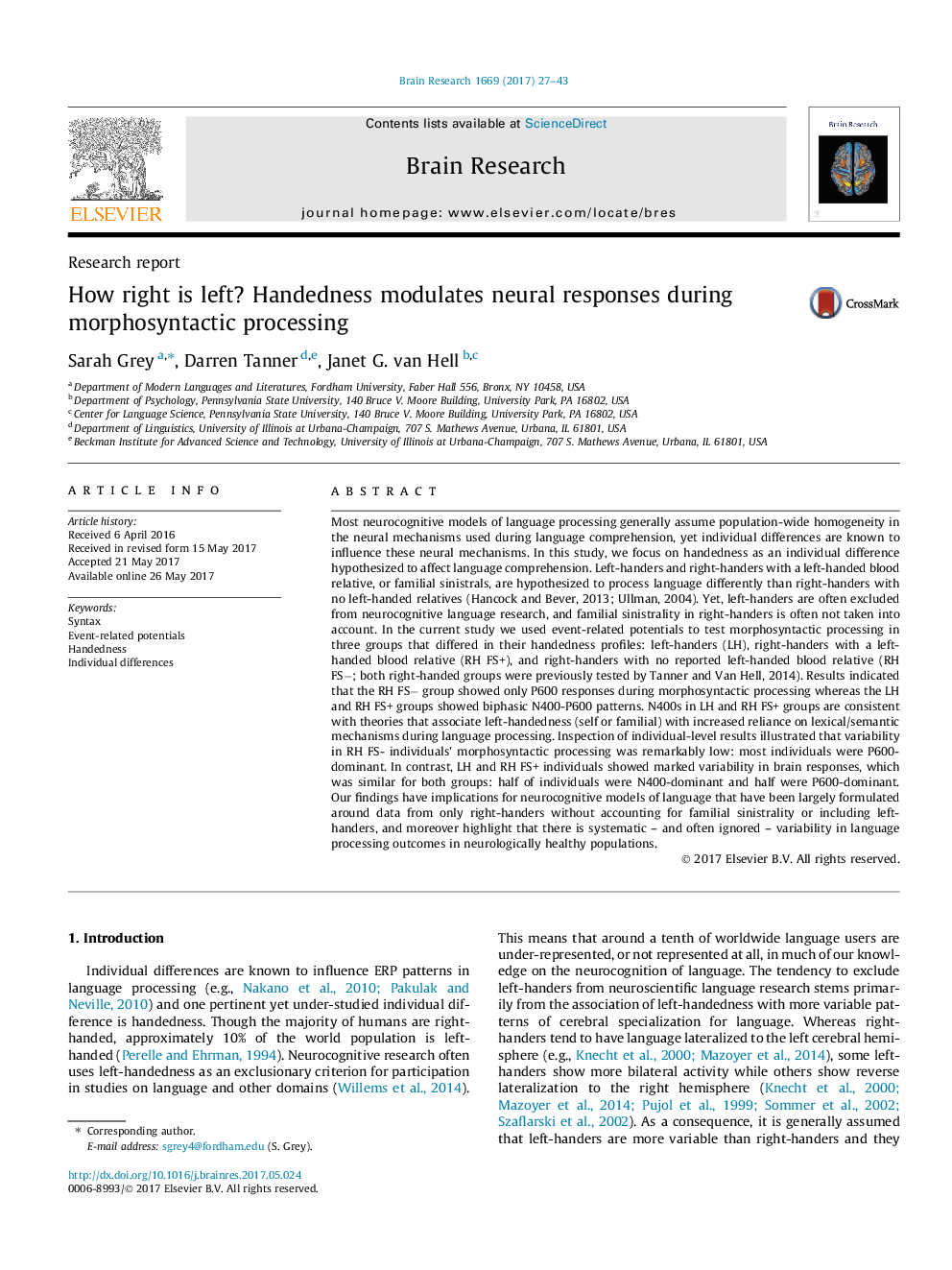| کد مقاله | کد نشریه | سال انتشار | مقاله انگلیسی | نسخه تمام متن |
|---|---|---|---|---|
| 5736749 | 1613776 | 2017 | 17 صفحه PDF | دانلود رایگان |
عنوان انگلیسی مقاله ISI
How right is left? Handedness modulates neural responses during morphosyntactic processing
دانلود مقاله + سفارش ترجمه
دانلود مقاله ISI انگلیسی
رایگان برای ایرانیان
کلمات کلیدی
موضوعات مرتبط
علوم زیستی و بیوفناوری
علم عصب شناسی
علوم اعصاب (عمومی)
پیش نمایش صفحه اول مقاله

چکیده انگلیسی
Most neurocognitive models of language processing generally assume population-wide homogeneity in the neural mechanisms used during language comprehension, yet individual differences are known to influence these neural mechanisms. In this study, we focus on handedness as an individual difference hypothesized to affect language comprehension. Left-handers and right-handers with a left-handed blood relative, or familial sinistrals, are hypothesized to process language differently than right-handers with no left-handed relatives (Hancock and Bever, 2013; Ullman, 2004). Yet, left-handers are often excluded from neurocognitive language research, and familial sinistrality in right-handers is often not taken into account. In the current study we used event-related potentials to test morphosyntactic processing in three groups that differed in their handedness profiles: left-handers (LH), right-handers with a left-handed blood relative (RH FS+), and right-handers with no reported left-handed blood relative (RH FSâ; both right-handed groups were previously tested by Tanner and Van Hell, 2014). Results indicated that the RH FSâ group showed only P600 responses during morphosyntactic processing whereas the LH and RH FS+ groups showed biphasic N400-P600 patterns. N400s in LH and RH FS+ groups are consistent with theories that associate left-handedness (self or familial) with increased reliance on lexical/semantic mechanisms during language processing. Inspection of individual-level results illustrated that variability in RH FS- individuals' morphosyntactic processing was remarkably low: most individuals were P600-dominant. In contrast, LH and RH FS+ individuals showed marked variability in brain responses, which was similar for both groups: half of individuals were N400-dominant and half were P600-dominant. Our findings have implications for neurocognitive models of language that have been largely formulated around data from only right-handers without accounting for familial sinistrality or including left-handers, and moreover highlight that there is systematic - and often ignored - variability in language processing outcomes in neurologically healthy populations.
ناشر
Database: Elsevier - ScienceDirect (ساینس دایرکت)
Journal: Brain Research - Volume 1669, 15 August 2017, Pages 27-43
Journal: Brain Research - Volume 1669, 15 August 2017, Pages 27-43
نویسندگان
Sarah Grey, Darren Tanner, Janet G. van Hell,